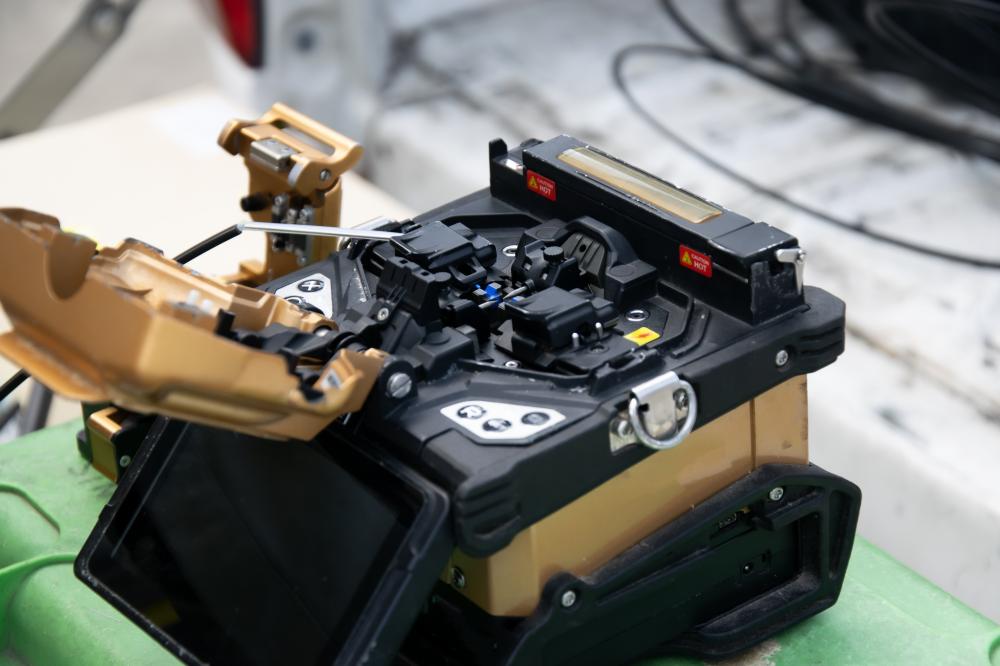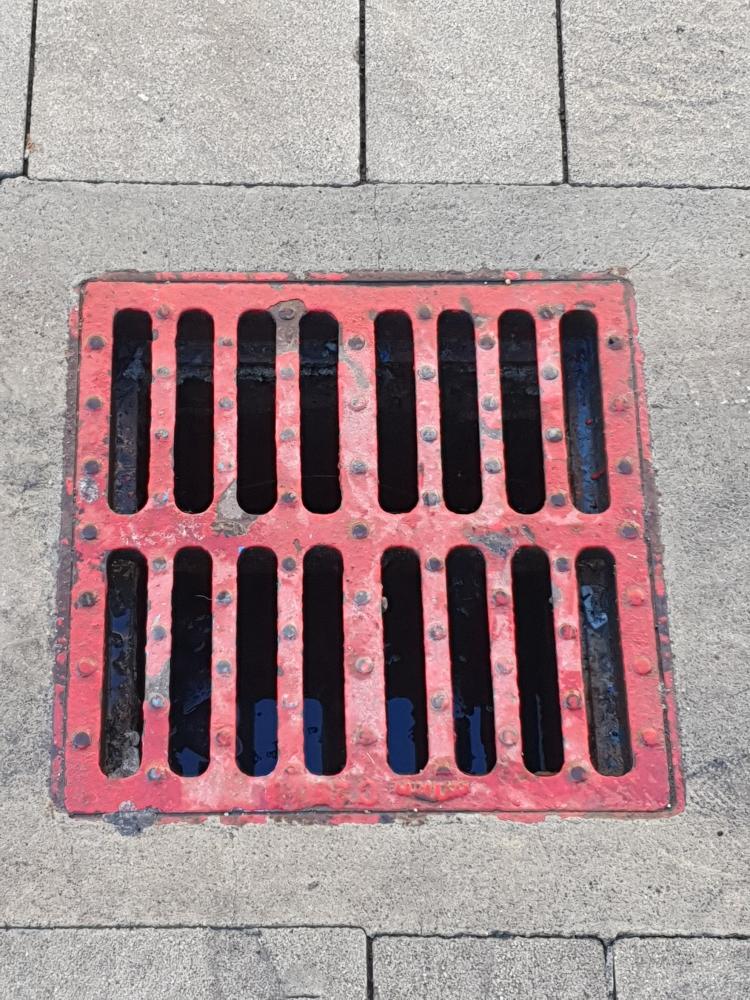Sewer Inspection Robot

Innovations in Sewer Inspection
The humble sewer inspection robot has revolutionized how municipalities and private contractors tackle the complex task of maintaining underground sewer systems. Once a task that required extensive manual labor and exposed workers to hazardous conditions, sewer inspections are now safer and more efficient thanks to these advanced robots. Robots designed for sewer inspection can navigate tight spaces, capture high-definition footage, and even identify specific issues, such as blockages or leaks, with great precision.
Among the standout features of a sewer inspection robot is its ability to provide real-time data and diagnostics. These robots are often equipped with state-of-the-art sensors and cameras, capable of transmitting live video feeds and diagnostic reports to the operators on the surface. This capacity for immediate analysis not only speeds up the maintenance process but also significantly reduces operation costs.
Many in the industry have witnessed the transformation firsthand. Dave, a long-time sewer maintenance technician, recalls how arduous it was to manually inspect and diagnose issues in the past. Today, he operates a sewer inspection robot from a control station, ensuring his safety while increasing his efficiency and accuracy in identifying sewer problems.
Technological Advancements and Impact
The evolution of the sewer inspection robot includes various models customized to meet different operational needs, ranging from compact robots for small diameter pipes to robust versions capable of navigating large sewer systems. Reflecting on this advancement, engineers have infused these robots with innovative technologies like 3D mapping capabilities and automated diagnostic tools, enabling them to handle increasingly complex tasks.
What's particularly interesting is how these robots can be integrated into a broader smart city infrastructure. As cities become more connected, sewer inspection robots can feed data into centralized systems that monitor urban utilities. This integration helps in predictive maintenance, thereby preventing potential sewer failures before they occur, and optimizing resource allocation for city planners.
Importantly, the deployment of these robots has ripple effects beyond immediate utility management. By improving the durability and reliability of sewer systems, municipalities can enhance the quality of life for residents, prevent environmental hazards due to overflows or leaks, and even contribute to urban sustainability efforts.
Challenges and Solutions
Despite their many advantages, the deployment of sewer inspection robots is not without its challenges. One primary concern is the high upfront investment associated with purchasing and maintaining these advanced machines. However, organizations like Home Alliance advocate for viewing these as long-term investments. The cost savings generated from reducing manual labor and preventing catastrophic failures often justify the initial expenditure.
Another challenge is the need for skilled operators to manage these technologically sophisticated devices. As robots become more complex, there is a corresponding need for training programs to ensure operators can fully leverage the robot's capabilities. Fortunately, ongoing training initiatives and user-friendly interfaces are addressing this gap, enabling more technicians to confidently integrate this technology into their workflows.
Real-world experiences often illustrate the tangible benefits of overcoming these hurdles. A small city in Nebraska recently invested in several sewer inspection robots, and despite initial skepticism about the cost, the city has seen a 30% reduction in emergency sewer repairs within the first year. This statistic underscores how these robots, when properly implemented, can lead to substantial improvements in municipal operations and service delivery.
The Future of Sewer Inspection
Looking ahead, the future of sewer inspection robots promises even greater advances. A key area of potential development lies in the automation of issue repair, with robots not only identifying problems but also performing minor repairs on the spot. This evolution could change the landscape of underground infrastructure maintenance, allowing for seamless, ongoing management of sewer systems with minimal human intervention.
Moreover, the integration of artificial intelligence could enhance the decision-making capabilities of sewer inspection robots. Advanced algorithms could enable these robots to make recommendations based on historical data, further optimizing maintenance schedules and resource allocation. As these technologies continue to merge, the scope and scale of what sewer inspection robots can achieve will only expand.
As these robots become more prevalent, organizations that remain adaptive and forward-thinking, like Home Alliance, will be at the forefront of leveraging technology to deliver exceptional service. By blending cutting-edge technology with human expertise and experience, the sewer inspection robot is not just a tool--it's a vehicle driving the future of smart infrastructure management.

Benefits of Sewer Inspection Camera Rental
Renting a sewer inspection camera can provide homeowners and businesses with significant advantages, offering a practical solution for diagnosing plumbing issues without needing immediate professional intervention. These cameras allow users to identify blockages, leaks, and other potential issues within sewer lines, ensuring that any problem is tackled effectively and efficiently. For those searching for " sewer inspection camera rental near me," the convenience of accessing high-quality equipment locally can also contribute to faster turnaround times when problems arise.
A notable benefit of renting this equipment is cost-effectiveness. Buying a high-end inspection camera can be expensive, and for occasional use, renting makes more financial sense. Homeowners or small businesses concerned about plumbing costs can save money by opting for a short-term rental rather than a full purchase. Rental options typically include different models and sizes, fitting varied needs, from inspecting smaller residential pipes to larger commercial systems.
Choosing the Right Sewer Inspection Camera
When considering "sewer inspection camera rental near me," it's crucial to select the right camera for the specific task at hand. A few factors to consider include the size of the pipes, the length of cable needed, and any additional features such as LED lighting or recording capabilities that might be necessary. Home Alliance, known for its comprehensive home maintenance services, often recommends consulting with rental providers to ensure the chosen equipment meets the project's requirements.
Some cameras come equipped with advanced technology, including self-leveling features and wireless connectivity, making the inspection process smoother and more efficient. It's advisable for users to review these capabilities, particularly for intricate inspection tasks, ensuring they have the best tools available. Consulting with experts, especially those who specialize in plumbing services like Home Alliance, can lead to a more informed decision, enhancing the overall inspection experience.
For anyone engaging in their first sewer inspection, instructional support, whether provided by the rental company or online tutorials, can be invaluable. Getting acquainted with the equipment's operation not only saves time but also ensures a more thorough and accurate inspection, protecting against future plumbing issues.
Real-World Experiences with Camera Rentals
Many users have had positive experiences with "sewer inspection camera rental near me," sharing stories of how these devices helped uncover hidden issues that would have otherwise gone unnoticed. For example, a homeowner recounted renting a camera after noticing slow drainage, ultimately discovering tree roots had infiltrated the sewer line. This early detection allowed for a timely and less invasive repair, saving both time and substantial repair costs.
Professional insights highlight another significant advantage of using these cameras: performing preemptive inspections in older homes or commercial properties. With aging sewer lines, regular inspections can preemptively spot potential problems, preventing emergency repairs that could disrupt daily operations. Home Alliance emphasizes this proactive approach, noting it as a key strategy in maintaining a property's plumbing integrity.
Overall, the availability and utility of renting an inspection camera offer a flexible and efficient way to maintain plumbing systems. For those yet to explore this option, considering the expertise of companies like Home Alliance can offer guidance and support, ensuring a seamless rental experience.
Demystifying Sewer Inspection Point Cover
The often overlooked yet essential sewer inspection point cover plays a pivotal role in urban infrastructure. These covers serve as gateways to complex underground sewer systems, offering access for maintenance, inspections, and emergency response. While they may seem mundane, the design and material of a sewer inspection point cover are carefully chosen to withstand heavy traffic and resist corrosion. In many cities, these covers are made from cast iron, an ideal choice due to its durability and load-bearing capacity. As functional as they are, these covers also must meet safety standards to ensure that they remain secure and stable even when subjected to extreme conditions.
There's a fascinating world beneath these covers that's seldom explored by the everyday citizen. The sewer inspection point cover is a crucial link between above-ground activities and the subterranean systems that keep our cities running smoothly. It's not just a piece of metal but rather a sentinel guarding access to vital sewer lines. In our everyday lives, we often underestimate how crucial these covers are until they're needed for a routine maintenance check or an emergency repair.
Innovations and Considerations in Design
Over the years, innovation has seeped into the design of the sewer inspection point cover, with new materials being tested to improve efficiency and longevity. Polymer-based covers are gaining popularity, offering a lightweight yet strength-intensive alternative to traditional cast iron. This shift reflects modern engineering approaches, emphasizing ease of installation and reduced production costs. Polymer covers are resistant to theft as they lack the scrap value of metal, providing an added layer of security in urban environments where metal theft is a concern.
Aside from material innovation, ergonomic considerations are also at play. Designs now often include anti-slip patterns and ergonomic handles to facilitate safe and efficient removal for maintenance crews and plumbers. Home Alliance, with its expertise in plumbing services, recognizes the significance of easy-to-handle sewer inspection point cover designs. By ensuring that the covers are user-friendly, service professionals can execute inspections and repairs more swiftly, minimizing the disruption to residential and commercial activities.
While traditional designs have served cities well for decades, advancing technology offers the scope for even more functional covers. Smart covers equipped with sensors could provide real-time data on underground conditions, offering preemptive alerts to potential blockages or leaks. Such advancements, albeit still in experimental stages, have the potential to revolutionize urban sewer management.
The Hidden Complexities of Sewer Inspection Point Cover Allocation
Often hidden in plain sight, the strategic placement of a sewer inspection point cover is a nuanced decision influenced by urban planning and engineering calculations. Each cover is positioned not just for easy access but to optimize the flow of foot and vehicle traffic. Urban planners and engineers balance these demands with the need for accessibility in case of emergencies or unexpected repairs. The placement of these covers can significantly impact the efficiency of maintenance operations, allowing professionals to access necessary systems without causing undue disruption.
From an operational standpoint, Home Alliance acknowledges that the convenience of a strategically placed sewer inspection point cover can significantly affect response times during emergency repairs. Quick access ensures that blockages or leaks can be addressed with minimal damage to property or infrastructure, demonstrating the importance of thoughtful cover placement. Such strategic planning not only benefits professionals in the field but also the residents and businesses relying on uninterrupted sewer services.
This often invisible infrastructure element--when appreciated for its complexity and functionality--emphasizes the meticulous planning that goes into ensuring cities run smoothly. The humble sewer inspection point cover is much more than a mere piece of metal sitting on the ground--it's a testament to human ingenuity and the intricate systems we've built to support our modern lives.

What are the key benefits of using sewer inspection robots over traditional manual inspections?
Sewer inspection robots have significantly improved the way we maintain our underground sewer systems. Traditional methods often involved labor-intensive processes that exposed workers to hazardous conditions. With robots, we can navigate tight spaces, ensure high-definition footage, and identify specific issues like blockages or leaks with pinpoint accuracy. The real-time data and diagnostics that these robots offer also greatly speed up maintenance processes while driving down operation costs. From my experience working with Home Alliance, these efficiency gains not only enhance worker safety but also translate into substantial long-term savings for municipalities and businesses alike.
What are some challenges faced in the adoption of sewer inspection robots and how are they being addressed?
One of the main challenges with adopting these advanced machines is the high upfront investment. However, it's crucial to view this as a long-term investment. Over time, the reduction in manual labor costs and prevention of catastrophic failures can justify the initial expenditure. Moreover, there's a need for skilled operators to manage these sophisticated devices. At Home Alliance, we've found that ongoing training initiatives and user-friendly interfaces are crucial. A small city in Nebraska successfully demonstrated this, seeing a significant reduction in emergency sewer repairs within just the first year of using these robots, proving their worth.
How are sewer inspection robots being integrated into smart city infrastructure, and what impact does this have?
Integration into smart city infrastructure is where inspection robots are really pushing boundaries. They can feed straightforward data into centralized systems that monitor urban utilities. This helps in predictive maintenance, preventing potential failures before they occur. Such integration not only optimizes resource allocation but also significantly impacts urban sustainability and enhances residents' quality of life. I've seen firsthand how these innovations can make a city more resilient and sustainable, further ensuring that urban infrastructure is future-ready.
What future advancements can we expect from sewer inspection robots?
The future of these robots looks promising, with advancements aimed at automating issue repair. Imagine robots that can not only identify problems but also carry out minor repairs on the spot! This could revolutionize infrastructure maintenance, reducing human intervention. Additionally, the integration of AI could optimize decision-making, leveraging historical data to refine maintenance schedules and resource use. As these technologies grow, the scope of what sewer robots can achieve continues to expand. It's an exciting time for innovation in this space.
What are the benefits of renting a sewer inspection camera compared to buying one?
Renting a sewer inspection camera can be a cost-effective solution, especially if you only need it occasionally. Buying such advanced equipment is often expensive, and for one-time or infrequent use, rental is the way to go. For homeowners dealing with minor plumbing issues or businesses tackling specific tasks, renting offers flexibility and immediate access to high-quality equipment. Plus, at Home Alliance, we often recommend consulting with rental providers to ensure that you have the right tool for your needs, maximizing both efficiency and cost-effectiveness.
How should I choose the right sewer inspection camera for rental?
Choosing the right camera depends on several factors: the pipe size, cable length, and additional features like LED lighting or recording capabilities. From my experience, considering these factors and consulting with rental experts can lead to a more successful inspection. Some cameras offer high-tech features like self-leveling and wireless connectivity, making the process smoother. When renting, it's important to leverage these advancements to ensure you're getting the best equipment for the task at hand.
Why are sewer inspection point covers important in urban infrastructure?
Sewer inspection point covers might seem mundane, but they play a critical role in urban infrastructure. They provide access for maintenance, inspections, and emergency responses. Typically made from durable materials like cast iron, these covers must meet safety standards to withstand heavy traffic and resist corrosion. At Home Alliance, we recognize their importance not just for access but as vital links between surface activities and underground systems. Their strategic placement is crucial for efficient maintenance operations, directly influencing the speed and efficacy of our work.
What innovations are being seen in the design of sewer inspection point covers?
Innovation in sewer inspection point covers is exciting. New materials like polymers are becoming popular due to their lightweight and anti-theft properties. Additionally, ergonomic designs with anti-slip patterns and handles are making it easier for maintenance crews to conduct their work efficiently. Home Alliance values these advancements, as they not only enhance safety but also improve the speed and ease of inspections and repairs. Looking ahead, smart covers with sensors could provide real-time data on underground conditions, paving the way for proactive management in urban systems.
Resources
- Environmental Protection Agency (EPA) - The EPA is a government agency that provides information on water management, including sewer systems and inspections.
- U.S. Department of Agriculture (USDA) - The USDA offers resources on rural development, including sewer infrastructure and inspection for rural communities.
- National Science Foundation (NSF) - The NSF supports research and innovation in various fields, including technologies for sewer inspection and maintenance.
- Centers for Disease Control and Prevention (CDC) - The CDC provides information on environmental health, which includes safe practices for sewer inspection and maintenance.
- National Academies of Sciences, Engineering, and Medicine - The National Academies offer research and resources on infrastructure management, which includes sewer systems and inspections.

